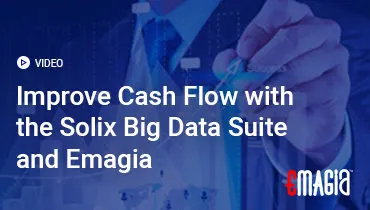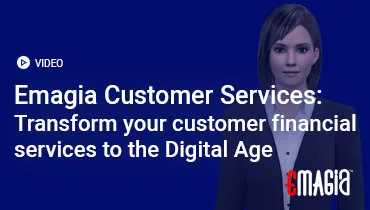In today’s fast-paced digital world, businesses and consumers are rapidly shifting from traditional paper invoicing to electronic billing systems. Understanding what electronic billing is, how e bill systems operate, and their benefits is crucial for modern financial management. This guide dives deep into everything you need to know about electronic billing, digital billing, and the future of e billing solutions.
What is Electronic Billing?
Electronic billing, also known as e billing or digital billing, refers to the process of sending and receiving bills electronically rather than on paper. This system enables businesses and customers to manage invoices, payments, and records online through secure platforms.
- Definition of electronic billing system
- Evolution from paper billing to online billing
- Key components of an e bill system
Understanding E Bill System: How Does Electronic Billing Work?
Explore the operational mechanics of electronic billing systems and how e bills are generated, transmitted, and paid.
- Step-by-step flow of an electronic billing transaction
- Integration with accounting and payment platforms
- Role of e bill payment gateways
- Different formats of electronic bills (PDF, XML, HTML)
Billing Electronic vs Traditional Billing: What’s the Difference?
Compare and contrast the benefits and drawbacks of electronic bills versus traditional paper billing.
- Speed and efficiency
- Cost savings on printing and postage
- Accuracy and error reduction
- Environmental benefits through paperless billing
What is E Bill Payment and How Does it Simplify Transactions?
Learn about what is ebill payment, the methods available for electronic bill payments, and their convenience for consumers.
- Various payment methods integrated with e billing
- Security measures and fraud prevention
- Automatic payment options and reminders
E Billing Solutions for Businesses: Choosing the Right System
A deep dive into the types of electronic billing solutions available in the market for businesses of all sizes.
- Cloud-based e billing platforms
- On-premise e billing software
- Features to look for in e billing solutions
- Customizable invoicing and automated reminders
Benefits of Online Billing for Consumers and Companies
Highlight the advantages that both consumers and businesses gain by adopting online billing and digital payment systems.
- Real-time bill tracking
- Reduced payment delays and improved cash flow
- Enhanced customer experience
- Simplified record-keeping and tax compliance
What is E Billing? Frequently Asked Questions
Clarify common queries about e billing, digital billing, and electronic billing systems.
- What is e billing?
- What is ebill?
- How does digital billing work?
- Is electronic billing secure?
What is E Bill? Clarifying the Terminology
Understanding the difference and overlap between e bill, ebill, and electronic bills.
- Definitions of e bill, ebill, and electronic bills
- How these terms are used interchangeably in the industry
Digital Billing: The Future of Financial Transactions
Discuss the future trends and technological advancements impacting digital billing.
- Mobile billing apps and integration
- AI and automation in e billing solutions
- Blockchain and secure digital billing innovations
Common Challenges in Implementing Electronic Billing System
Identify the typical hurdles organizations face when switching to electronic billing.
- Data security and privacy concerns
- Integration with legacy systems
- User adoption and training
- Regulatory compliance across regions
Electronic Billing System Compliance and Regulations
Explain important regulations governing e billing and electronic bills in various countries.
- Tax regulations related to digital invoices
- Data protection laws and compliance
- Standards for electronic document formats
How to Transition to an Electronic Billing System
A practical guide for businesses planning to switch from traditional billing to an e bill system.
- Assessing current billing processes
- Selecting an e billing provider
- Employee training and change management
- Testing and launching the new system
What is Electronic Billing in Different Industries?
Explore how electronic billing is adapted and used in sectors such as utilities, healthcare, telecom, and retail.
- Electronic billing for utility companies
- E billing in healthcare for medical bills and insurance
- Telecom electronic bills and customer portals
- Retail digital billing and e-commerce invoicing
What’s E Bill? Understanding Consumer Perspectives
How customers interact with electronic billing, including benefits and concerns.
- Receiving and viewing e bills
- Making payments through online portals
- Managing multiple e bills and billing accounts
Top Features to Look for in an Electronic Billing System
A checklist of essential features when choosing an electronic billing system.
- Automated invoice generation and delivery
- Multiple payment options (credit cards, ACH, wallets)
- Mobile-friendly interfaces
- Reporting and analytics tools
E Billing Solutions: Top Vendors and Platforms Overview
Highlight some leading electronic billing system providers and what they offer.
- Overview of popular e billing platforms
- Pros and cons of various vendors
- Cost considerations and pricing models
Electronic Bills and Environmental Impact
Discuss how e bills contribute to sustainability and reduce the carbon footprint.
- Paper reduction and forest conservation
- Decreased postal emissions
- Corporate social responsibility benefits
How Secure is Electronic Billing?
Address common security concerns and how e billing systems protect sensitive financial data.
- Encryption and secure data transmission
- User authentication and multi-factor login
- Fraud detection systems
How to Manage Electronic Bills Efficiently
Tips and best practices for businesses and consumers to manage electronic bills effectively.
- Organizing e bills for easy retrieval
- Using software to track payments and due dates
- Archiving and backing up electronic invoices
How Emagia Simplifies Your Electronic Billing and Digital Payment Process
Emagia provides innovative e billing solutions designed to streamline your billing process, reduce errors, and accelerate cash flow. With Emagia’s cutting-edge electronic billing system, businesses can automate invoice delivery, enable easy e bill payments, and enhance financial visibility—all while ensuring compliance and security.
- Overview of Emagia’s electronic billing capabilities
- Automation and AI-driven invoice processing
- Seamless integration with existing ERP and accounting systems
- Improved customer communication through e bill portals
- Case studies of Emagia’s impact on client billing efficiency
Frequently Asked Questions about Electronic Billing System
What is electronic billing?
Electronic billing is the process of sending, receiving, and paying bills electronically instead of using paper invoices.
What is e billing?
E billing, or electronic billing, refers to the system and process by which bills are created and paid digitally through online platforms.
What is ebill payment?
Ebill payment is the method of paying bills electronically, usually through online banking portals, mobile apps, or integrated payment gateways.
How does an electronic billing system work?
It works by generating digital invoices, sending them to customers electronically, and enabling secure online payments, often with automatic reconciliation.
What are the benefits of online billing?
Online billing offers faster processing, reduced costs, improved accuracy, and enhanced convenience for both businesses and consumers.
Is electronic billing secure?
Yes, electronic billing systems use encryption, authentication, and fraud detection to protect user data and transactions.
What is the difference between an e bill and an electronic bill?
There is no significant difference; both terms refer to digital invoices sent and paid electronically.
Can electronic billing help with environmental sustainability?
Absolutely, by reducing paper use and postal emissions, electronic billing supports greener business practices.
What industries use electronic billing the most?
Utilities, telecom, healthcare, and retail are among the industries heavily adopting electronic billing systems.
How do I transition my business to an electronic billing system?
Evaluate your current process, choose a suitable e billing solution, train staff, and roll out the system with testing and support.



